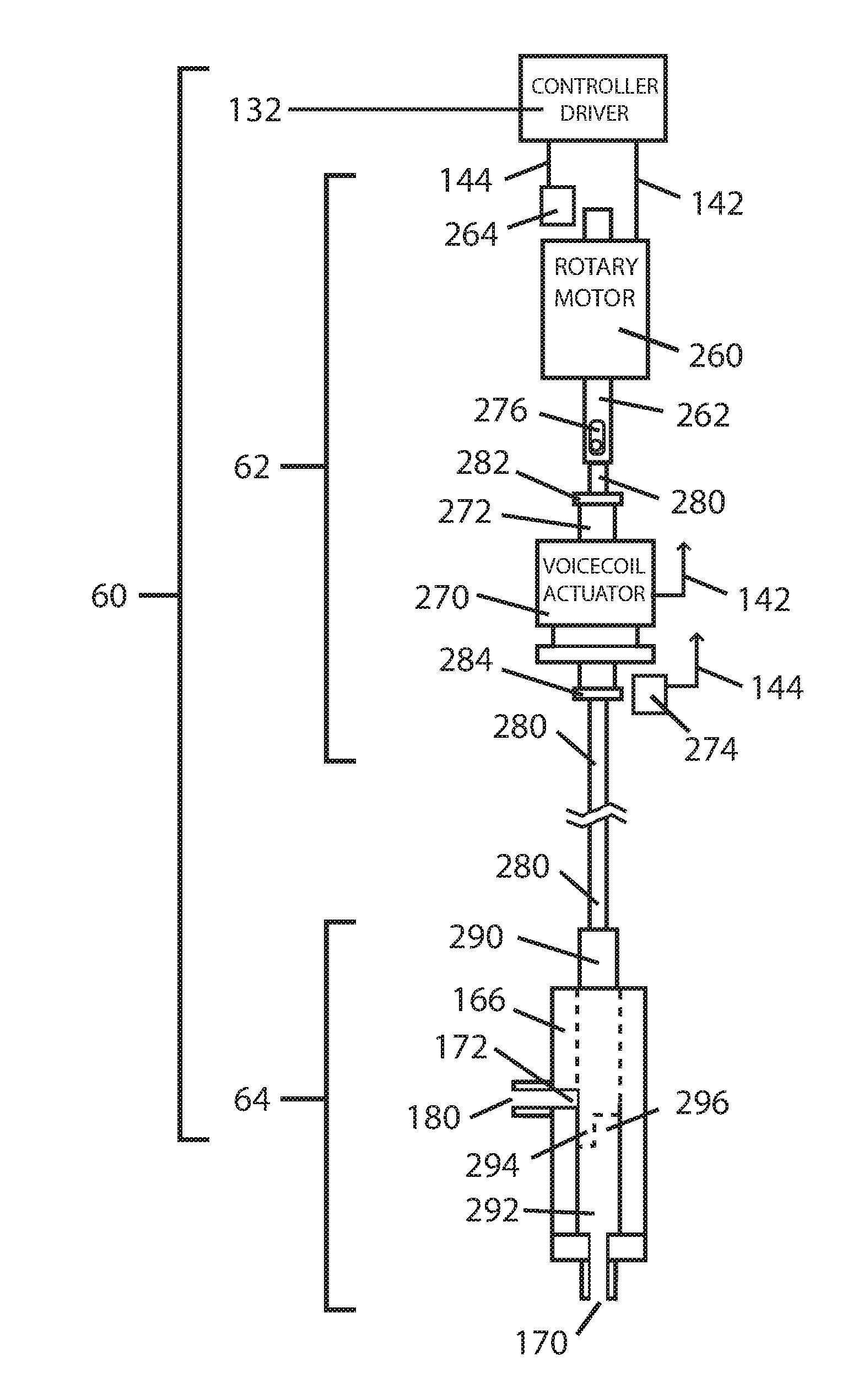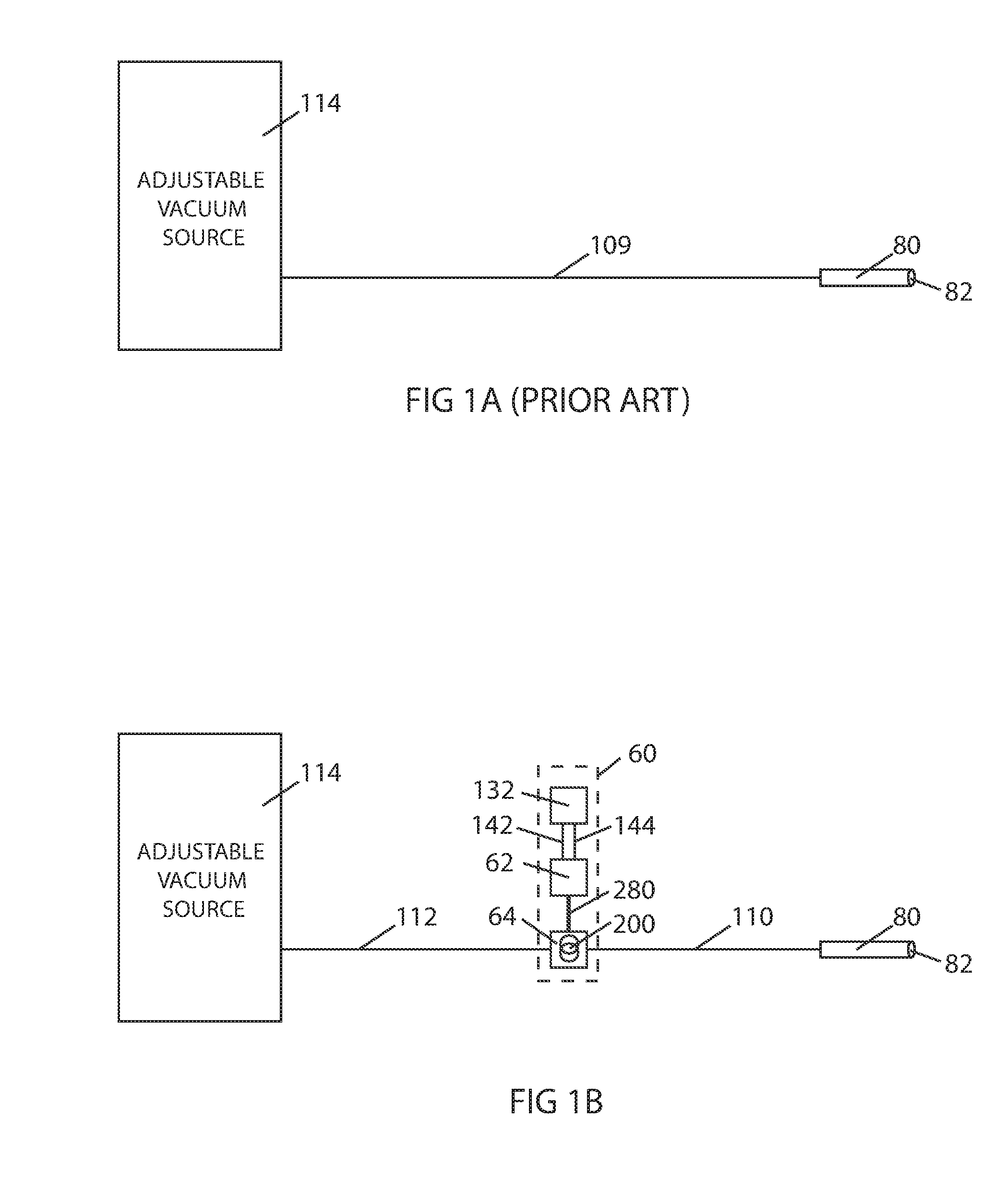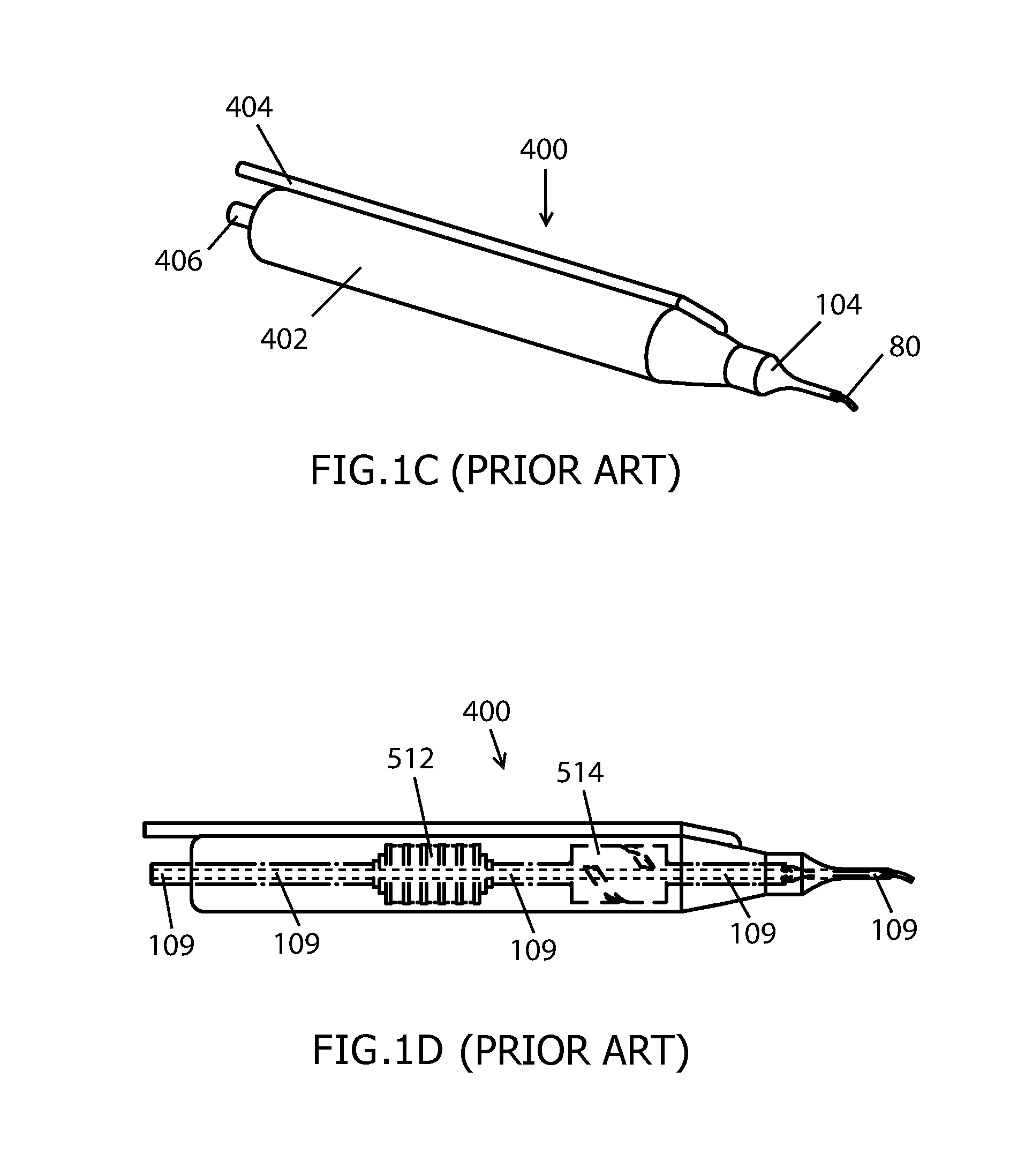Cyclic aperture flow regulator system
a flow regulator and cyclic aperture technology, applied in the field of surgery, can solve the problems of compromising the safety of the eye procedure, eye chamber instability, and eventual collapse of surrounding tissue, and achieve the effect of preventing post-occlusion instability of the body cavity and substantially reducing the cross-sectional area of the fluid apertur
- Summary
- Abstract
- Description
- Claims
- Application Information
AI Technical Summary
Benefits of technology
Problems solved by technology
Method used
Image
Examples
embodiment (
Alternative Embodiment (2)
Stand-Alone Flow Regulator System Embodiment
[0205]The cyclic aperture flow regulator system described in the preferred embodiment has an actuator portion 62 with sensors and actuators driven by a flow regulator controller 132 disposed in surgical console 150. Although this mode of operation allows the integration of multiple variables to improve system operation it is not a strict requirement for the implementation of this invention. Controller 132 including a processor and data storage memory can be incorporated in the same unit containing actuator portion 62 eventually requiring only external power such as a DC supply to operate in standalone mode. A user interface such as a footpedal 152 can directly connect to this standalone flow regulator system unit for an operator to command operation. The unit can further incorporate a vacuum sensor 140 in fluid connection with second fluid path 112 and disposed for example in the valve portion 64 of the flow regul...
PUM
 Login to View More
Login to View More Abstract
Description
Claims
Application Information
 Login to View More
Login to View More - R&D
- Intellectual Property
- Life Sciences
- Materials
- Tech Scout
- Unparalleled Data Quality
- Higher Quality Content
- 60% Fewer Hallucinations
Browse by: Latest US Patents, China's latest patents, Technical Efficacy Thesaurus, Application Domain, Technology Topic, Popular Technical Reports.
© 2025 PatSnap. All rights reserved.Legal|Privacy policy|Modern Slavery Act Transparency Statement|Sitemap|About US| Contact US: help@patsnap.com



